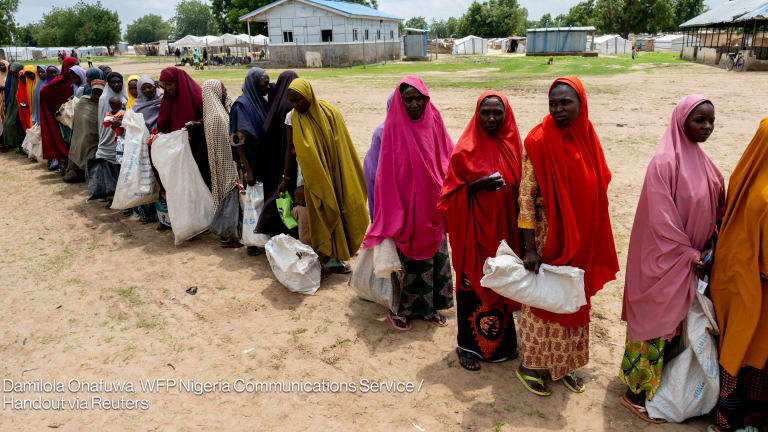Resilience as part of your organization’s DNA
<p>How can mounting challenges, and the stress they put on aid workers and organizations, result in improved performance and outcomes for the people we serve? Rick Augsburger explains.</p>
Development and humanitarian organizations and their staff are facing more challenges than ever before, and being asked to do more for more people than at any time in our history. These challenges and the related stressors can be debilitating. How can these challenges, and the stress they put on individual staff and entire organizations, actually result in improved performance and outcomes for the people we serve? One word: Resilience. Resilience is defined as the ability to quickly recover from external stresses or shocks. That’s a good place to start. We define it as the capacity to deal with organizational and environmental stressors in a way that increases the ability and willingness to effectively handle additional and even more intense challenges. Of course, the ability to handle stress and challenge is not an end in itself. In our sector, the goal of resilience is to develop the capacity to endure and recover from stressors in a healthy way and continue to effectively assist others in whatever conditions we are asked to do so. Resilience is the ever-increasing capacity to meet the needs of the most vulnerable, under the most trying conditions. How is resilience identified, developed and utilized in our organizations and in the service of others? Here are some lessons from our work with Chemonics, the American Red Cross, IMA World Health, DAI and many other Devex member organizations. First, resilience is an innate human quality. It’s how we’ve survived for millennia. It does, however, exist in different degrees in different individuals. Tests exist to identify it. Tools can be used as part of a comprehensive recruitment process to select staff that will perform well under challenging conditions. It is far less resource-intensive to identify and hire or promote the right staff than it is to replace those not suited for the challenges inherent to aid and development work. Next, resilience can be cultivated and increased. This is achieved through specific programs and processes that anticipate and respond to anticipated challenges and the stresses that can result, both at the individual and organizational levels. For instance, relief workers in conflict or post-conflict environments will inevitably face unique stressors. These can be as “simple” as being confined to heavily protected and isolated work sites. Staff in these situations needs to know there are ready avenues to relieve their isolation and deal with its mental, emotional and even physical effects. Staff care techniques, including comprehensive educational resources, improved self-care and stress management skills and access to regular consultations, are available for this purpose. It is important that management considers and acquires these resources before staff is sent into challenging conditions. On the organizational level, focused work with teams and leadership can develop and strengthen resilience. Third, to sustain resilience, staff care and other measures must be sustained. Increasing resilience is not simply about “getting through this one.” There are lessons to be learned from successfully performing in stressful situations. Those lessons must be systematically and regularly identified and applied. Resilience is a process, not an event. It begins before staff is hired and does not end. Which leads to the final lesson we’ve taken from our resilience work: Resilience must be part of an organization’s DNA. To be truly sustained, and to produce positive outcomes for individual staff, an entire organization, and the people we assist, resilience must be a strategic goal. This can only happen from the top. At some point in the process, executive management must participate in building, sustaining and communicating the importance of the resilient organization. The concrete advantages of a resilient organization are many. It fosters an environment that is healthy and productive. It attracts talented and committed staff. As importantly, it helps retain that staff. With aid and development organizations often experiencing up to 50 percent turnover, retaining staff and reducing recruitment and training costs can result in significant savings. Finally, stable and experienced staff enables an organization to be more efficient and effective. All of which is increasingly important as funders and donors apply increased scrutiny to expenditures and all of us in the sector seek news ways to achieve our goals in a cost-efficient, impactful manner. While resilience is an ancient reality, it is a rather new management concept. The discipline has been applied successfully from Haiti to Sudan and Afghanistan to Washington, D.C. But there is much more work to be done. Its advantages are too important to ignore in today’s ever-more challenging aid and development environment.
Development and humanitarian organizations and their staff are facing more challenges than ever before, and being asked to do more for more people than at any time in our history. These challenges and the related stressors can be debilitating. How can these challenges, and the stress they put on individual staff and entire organizations, actually result in improved performance and outcomes for the people we serve?
One word: Resilience.
Resilience is defined as the ability to quickly recover from external stresses or shocks. That’s a good place to start. We define it as the capacity to deal with organizational and environmental stressors in a way that increases the ability and willingness to effectively handle additional and even more intense challenges.
This story is forDevex Promembers
Unlock this story now with a 15-day free trial of Devex Pro.
With a Devex Pro subscription you'll get access to deeper analysis and exclusive insights from our reporters and analysts.
Start my free trialRequest a group subscription Printing articles to share with others is a breach of our terms and conditions and copyright policy. Please use the sharing options on the left side of the article. Devex Pro members may share up to 10 articles per month using the Pro share tool ( ).
The views in this opinion piece do not necessarily reflect Devex's editorial views.
Rick is managing director of the KonTerra Group, an organizational effectiveness consulting firm in Washington, D.C., where he directs the firm’s corporate operations, resiliency programs, leadership development, strategic planning, and evaluation. He has more than 25 years experience in international development, focusing on organizational effectiveness, resiliency & staff care, strategic planning, and management & admin, and has traveled extensively working on development programs in 72 countries.








